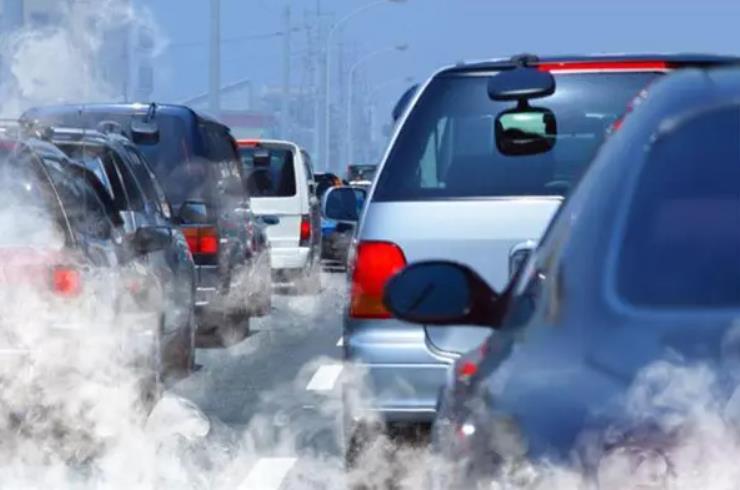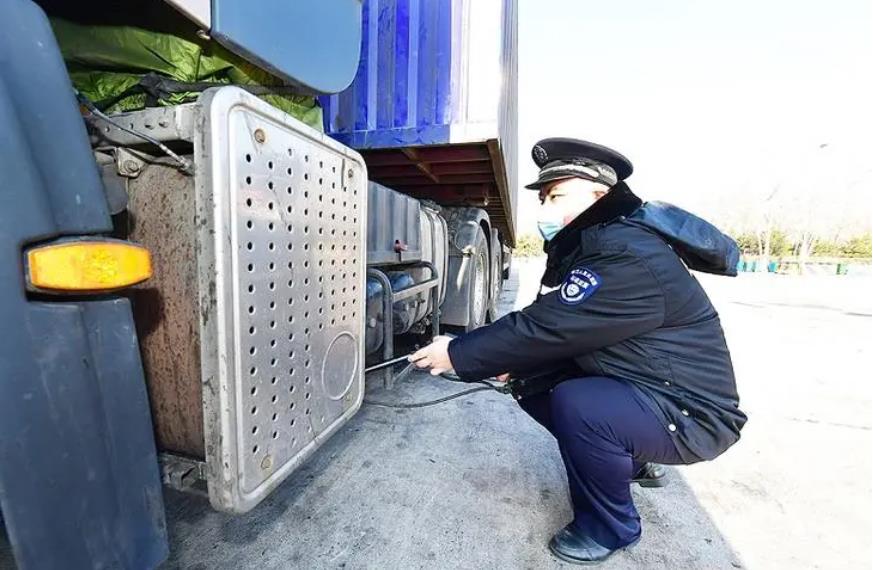NEWS CENTER
NEWS CENTER

With the increasing number of vehicles, the concentration of nitrogen oxides, hydrocarbons, Oxocarbon, fine particles and other pollutants in the air is also rising, which has caused great harm to human health, the atmosphere and the earth environment. In order to protect the environment and reduce air pollution, many countries have introduced vehicle exhaust emission standards, which have made clear restrictions on the emissions of exhaust pollutants, and China is no exception.

From a global perspective, emission standards are mainly divided into three major systems: "Europe, America, and Japan". China's emission standards mainly follow the European system and are formulated based on European vehicle emission standards.
Since the implementation of the first national standard in 2001, to the current comprehensive implementation of the sixth stage of the sixth national emission standard, China's vehicle emission standards have undergone five transformations and upgrades in more than 20 years. Today, we will review the upgrading process of China's exhaust emission standards with Darong Axle to see what the emission standards in each stage are and what impact they have on vehicle technology.

1、 National emission standard I
Time:
As early as 1999, Beijing had already taken the lead in implementing national emission standards. By April 16, 2001, the National Bureau of Standards officially issued GB17691-2001 "Limits and Measurement Methods for Exhaust Pollutant Emissions from Compression Ignition Engines for Vehicles", which is the first phase of China's motor vehicle pollutant emission standard (National I), and it was stipulated that it will be fully implemented from July 1, 2001.
Emission requirements:
Country I mainly targets carbon monoxide and nitrogen oxides, requiring carbon monoxide not to exceed 3.16g/km and hydrocarbons not to exceed 1.13g/km. The particulate matter standard for diesel vehicles shall not exceed 0.18g/km, and the durability requirement is 50000km.
Vehicle technology:
At the time of the implementation of Phase I, domestic heavy-duty trucks had just entered the right track, using the traditional, "high-power and durable" naturally aspirated+mechanical oil supply system, with a relatively single model. Therefore, the implementation of Phase I did not have a significant impact on the market and main engine manufacturers.
2、 National emission standard II
Time:
In 2004, the national emission standards for heavy-duty gasoline vehicles and heavy-duty gas vehicles began to be implemented nationwide. The implementation date for heavy-duty diesel vehicles was September 1, 2005, and for light diesel vehicles was July 1, 2006.
Emission requirements:
Gasoline vehicles shall not exceed 2.2g/km in carbon monoxide, 0.5g/km in hydrocarbons, 1.0g/km in diesel vehicles, 0.7g/km in hydrocarbons, and 0.08g/km in particulate matter.
Vehicle technology:
In the second stage of the country, domestic diesel vehicles mostly use mechanical fuel supply, and the Technology roadmap is the same as that in the first stage of the country, except that natural suction is changed into turbocharging, and the requirements of standard limits are met by optimizing internal combustion, improving fuel injection pressure and intake volume. Under this technical standard, vehicles are powerful and easy to maintain, but the problem of insufficient fuel combustion still exists, so black smoke is often emitted by vehicles.
3、 National III Emission Standards
時間:
The Beijing region began implementing the National III emission standards on December 30, 2005. The national implementation time for National III is: July 1, 2008 for heavy-duty gas vehicles and heavy-duty diesel vehicles, July 1, 2009 for light diesel vehicles, and July 1, 2010 for heavy-duty gasoline vehicles.
Emission requirements:
Hydrocarbons shall not exceed 0.2g/km, carbon monoxide shall not exceed 2.3g/km, and hydrocarbons shall not exceed 0.15g/km. There is no requirement for the new version of PM.
Vehicle technology:
The total emission of pollutants in the national III stage is about 40% lower than that in the national II stage. In order to meet the latest emission standards, the vehicle enterprises have upgraded and reconstructed the engine and exhaust system, added the vehicle self diagnosis system, and upgraded the three-way catalytic system. The diesel engine has entered the era of electronic control, replacing the previous mechanical pump, and the fuel supply system has entered the stage of "electronic control" from the previous "mechanical control".
However, due to insufficient technological reserves in the early stages, many car companies needed to import equipment and products from abroad, leading to an increase in production costs; The service technology in the domestic car aftermarket cannot keep up, which has had a certain impact on vehicle repair and maintenance. Car owners are unwilling to pay, so they are more inclined to choose "fake National III" vehicles, which are cheaper, have consistent appearance and product announcements, but do not meet emission standards.
4、 National IV Emission Standards
Time:
According to the plan, the specific time for nationwide implementation is: July 1, 2013 for light diesel vehicles, July 1, 2013 for heavy gasoline vehicles, January 1, 2011 for heavy gas vehicles, and July 1, 2013 for heavy diesel vehicles.
In fact, on July 1, 2013, only some pilot areas began to strictly implement National IV standards: Beijing, Shanghai, Guangzhou, Shenzhen, Nanjing, Urumqi, Lanzhou, etc. Nationwide, National IV emission standards were not implemented until January 1, 2015.
Emission requirements:
The emission value of hydrocarbons shall not exceed 0.1g/km, the emission value of carbon monoxide shall not exceed 1.0g/km, and the emission value of nitrogen oxides shall not exceed 0.08g/km. Basically, vehicles can only meet the national III standard by reducing their pollutants by 30% to 50%.
車輛技術:
There is little change in the fuel supply end Technology roadmap of diesel vehicles in the national IV stage, mainly because the fuel injection pressure is increased, the engine burns more fully, and the pollutants discharged from the engine to the aftertreatment system are reduced.
In terms of the aftertreatment system, National IV vehicles have been upgraded, which is also the biggest difference from National III vehicles. At that time, there were two main upgrade plans: one was selective catalytic reduction (SCR) technology, which uses vehicle urea to treat nitrogen oxides in the exhaust gas; Another type is Exhaust Gas Recirculation (EGR) technology, which processes the particles generated by combustion through Particle Trap (DPF) or Particle Catalytic Converter (DOC).
5、 National V Emission Standards
Time:
On September 17, 2013, the Ministry of Environmental Protection issued the Emission Limits and Measurement Methods of Pollutants from Light Vehicles (China's Fifth Stage). Since September 2013, Beijing has taken the lead in implementing the national emission standard for Kei car; Starting from July 1, 2017, the national V emission standards will be fully implemented nationwide.
Emission requirements:
The National V emission standard requires a hydrocarbon emission value of 0.1g/km, a carbon monoxide emission value of 1.00g/km, a hydrocarbon emission value of 0.060g/km, and a pm emission value of 0.0045g/km. Among them, the emission of nitrogen oxides has been reduced by 25% compared to the national IV standard, and the emission limit for PM has been added, which is more stringent.
Vehicle technology:
National V vehicle technology has not changed much, mainly due to further optimization. The fuel supply system is mainly based on Common rail technology, and the aftertreatment system is also mainly based on EGR and SCR. The main difference from National IV vehicles lies in their control strategy and torque limitation.
6、 National VI Emission Standards
Time:
2018年6月22日,生態環境部、國家市場監督管理總局正式提出重型柴油車國Ⅵ排放標準實施時間,分為國Ⅵ a和國Ⅵ b兩個階段。
The implementation date for gas vehicles in China's Phase VI A is July 1, 2019, and for urban vehicles is July 1, 2020. Starting from July 1, 2021, all vehicles will begin to implement Phase VI A. In Phase VI B of China, gas vehicles will be implemented on January 1, 2021, and will be fully implemented from July 1, 2023.
Emission requirements:
Phase VI a: Carbon monoxide emissions shall not exceed 700mg/km; Non methane hydrocarbons shall not exceed 68mg/km; Nitrogen oxides shall not exceed 60mg/km; PM fine particles cannot exceed 4.5mg/km; PN fine particles cannot exceed 6x10 ^ 11mg/km.
Phase VI B of China: Carbon monoxide emissions shall not exceed 500/km; Non methane hydrocarbons shall not exceed 35mg/km; Nitrogen oxides shall not exceed 35mg/km; PM fine particles shall not exceed 3mg/km; PN fine particles cannot exceed 6x10 ^ 11mg/km.
Vehicle technology:
The vehicle technology in Phase VI has higher requirements than that in Phase V. The Technology roadmap is mainly divided into EGR and non EGR. EGR refers to turbocharging+electronic control+Common rail+medium high EGR (medium high exhaust gas recirculation)+DOC (diesel oxidation catalyst)+POC (particulate oxidation catalyst)+SCR (selective catalytic converter), Non EGR refers to turbocharging+electronic control+Common rail+DOC (diesel oxidation catalyst)+SCR (high-efficiency selective catalytic converter). Some models also add ASR (ammonia escape catalyst).
The technical principles of these two routes are the same, both of which are divided into two parts: the engine and the aftertreatment system. In addition to controlling the amount of nitrogen oxides, the aftertreatment system also needs to control the emission of PM particles. The exhaust emissions of vehicles must meet national limit standards whether in operation, idle, cold, or other conditions; The engine needs to work in collaboration with the aftertreatment system, thus adding various sensors and actuators such as air flow meter, electronically controlled EGR, pulse controlled turbocharger, throttle body, etc.

In order to meet policy requirements, automotive companies need to constantly update and iterate their relevant technologies, and each upgrade is a challenge to their research and development capabilities. For car owners, stricter emission standards often mean an increase in comprehensive vehicle costs and limitations in vehicle operations. However, we need to recognize that upgrading emission standards is an international trend, especially in the context of carbon peaking and carbon neutrality. It is also expected to continue to tighten emission standards.
In November last year, the proposal for the seventh phase of emission standards in Europe was launched, and some people said, for example, 'If Euro VI wears a cleaning mask on vehicles, Euro VII is equivalent to an air purifier', indicating the severity of the proposal. Our country's vehicle emission standards started relatively late and have been catching up with developed countries all the way. As for whether we will continue to follow Europe VII and to what extent, it is still uncertain.
ONLINE MESSAGE
 24-hour consultation telephone
24-hour consultation telephone
400-6363-989
If you have any needs, you can contact us
CONTACT US
Customer Service Hotline:400-6363-989 Company Address:No. 2, Guoyuan Road, Industrial Park, Quanpu Town, Liangshan County, Jining Cityall rights reserved Darong traffic machinery Co., LTD Lu ICP No. 20025388-2